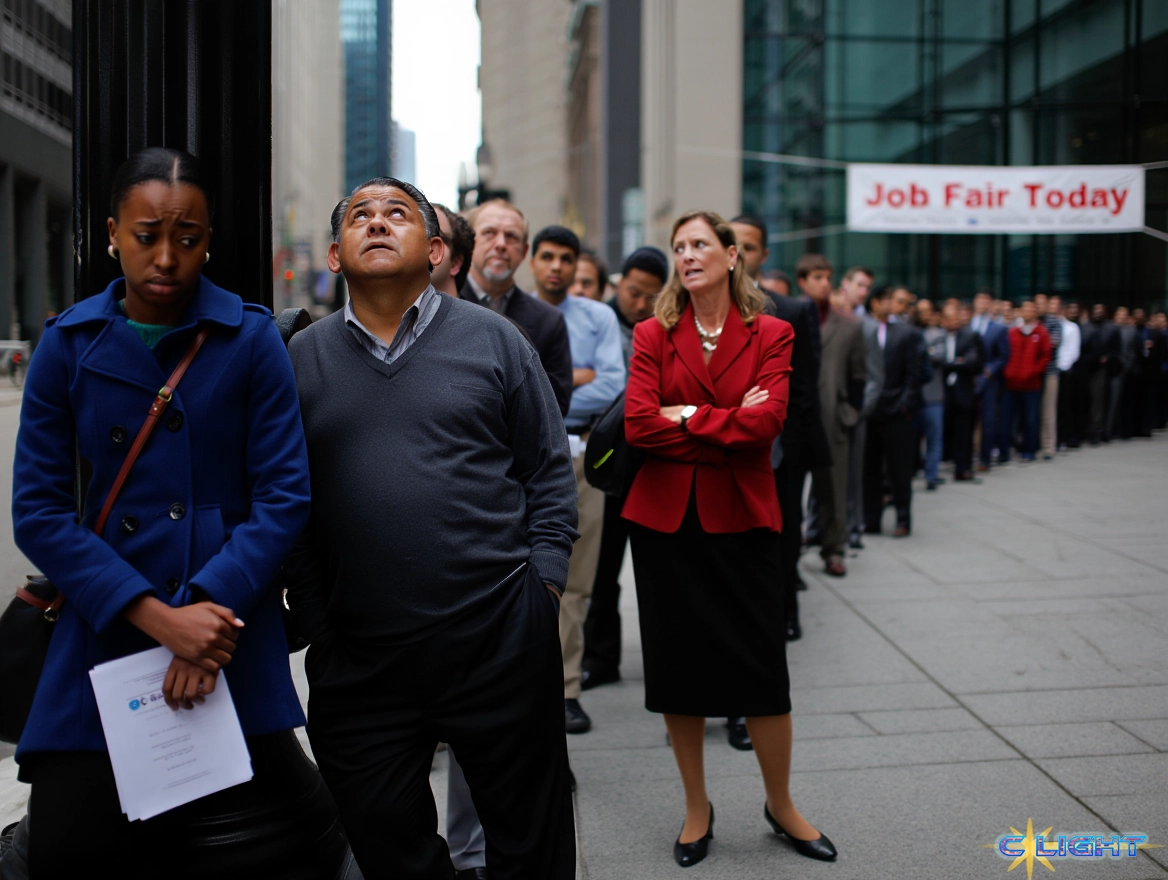3 minutes read time.
Beneath the surface of a seemingly stable U.S. economy, a quiet crisis is brewing. While the headline unemployment rate remains near historic lows, a more troubling metric is flashing red: the number of Americans trapped in long-term unemployment has surged to a post-pandemic high, reaching a level not typically seen outside of a major recession. More than 1.9 million Americans have been out of work for at least six months, now accounting for more than one in four of all unemployed workers. This is a dangerous threshold, a statistical marker that often signals a descent into financial ruin, skills atrophy, and a permanent exit from the labor force for millions of Americans.
The stories from the front lines of this crisis are a portrait of frustration and despair. Steve Beal, a 47-year-old with over 15 years of IT experience, was laid off from a six-figure job at Best Buy’s corporate office in March 2024. “I thought I should be able to step into any job,” he said, but after applying to at least 300 positions, “it’s all rejections.” In Los Angeles, paralegal Felicia Enriquez lost her job 14 months ago. Her unemployment benefits ran out in February, she is six months behind on rent, and she now relies on food stamps to feed her 16-year-old daughter. “It gets harder the longer it gets. That’s the vicious part,” she said. “It starts to break you down emotionally.”
This is not just anecdotal. Confidence in the ability to find a new job is at a record low, according to a recent survey by the Federal Reserve Bank of New York. For the first time in four years, there are now more unemployed people in the United States than there are job openings. The labor market has settled into what one analyst called a “low-hire, low-fire environment,” a state of stagnancy where the probability of losing your job hasn’t increased dramatically, but “if you become unemployed, it’s much harder to find a job.”
To truly understand the gravity of the current situation, it is necessary to look past the unique economic shock of the 2020 pandemic and compare today’s numbers to previous periods of economic turmoil. The Washington Post article notes that since 1950, the share of long-term unemployed has only exceeded 25% after a major recession. This happened for a single month in 1983 and then for a brutal, eight-year stretch following the Great Recession of 2009. We have now crossed that threshold again.
A historical analysis from the U.S. Bureau of Labor Statistics puts the current crisis in stark relief. In the aftermath of the 2008 financial crisis, long-term unemployment reached a catastrophic peak. By the second quarter of 2010, a staggering 45.1 percent of all unemployed Americans had been out of work for over six months. The number of long-term unemployed swelled to 6.7 million people. It took years for that number to recede. By comparison, the pre-2008 “normal” for long-term unemployment as a share of the total was typically in the 10-20% range.

Today, at over 25%, we are far from the depths of the Great Recession’s peak, but we are also alarmingly far from the healthy, dynamic labor market of the pre-2008 era. We are in a dangerous middle ground, a quiet crisis that lacks the spectacular collapse of 2008 but is nonetheless inflicting profound and lasting damage on millions of households. As the Federal Reserve prepares to meet this week, this quiet but persistent crisis in long-term unemployment will be the ghost at the table, a worrying sign that the foundations of the American labor market are far shakier than the headline numbers suggest.
Discover more from Clight Morning Analysis
Subscribe to get the latest posts sent to your email.










